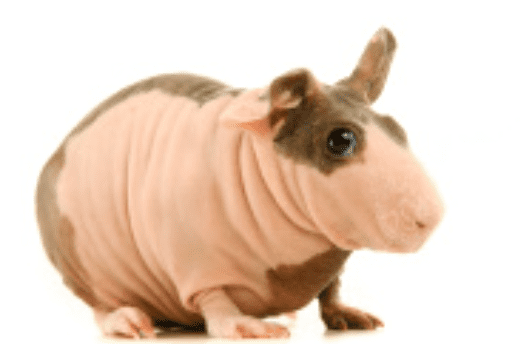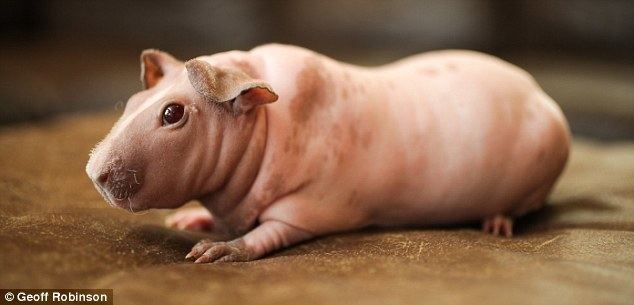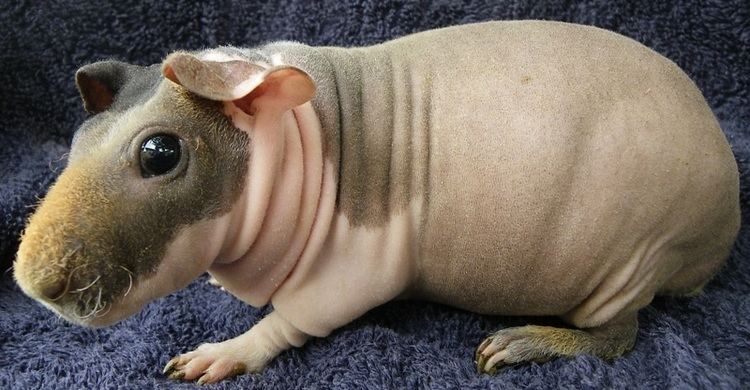Scientific name Cavia porcellus Rank Breed | ||
 | ||
Similar Teddy guinea pig, Peruvian guinea pig, Abyssinian guinea pig, Sheltie, Texel guinea pig | ||
Guinea pig popcorning new skinny pig
The Skinny Pig is an almost hairless Guinea pig. Despite common belief skinny pigs are not a "breed" of guinea pig, they are a recessive genetic mutation and can easily be recreated by breeding out two generations. A skinny pig bred to a normal guinea pig will make all normal looking guinea pigs who are heterozygous or "het" for hairless, meaning they carry the genes. If you breed het for hairless to a skinny pig you will get 50% hets and 50% hairless and of course two hairless make 100% hairless. Recessive genetic mutations work the same in all living creatures. Skinny pigs typically have hair on their muzzles, feet, and legs, but are hairless over the remainder of their bodies. Some of them have a thin covering of fuzzy hair on their backs as well. A healthy Skinny has skin that is mostly smooth with some wrinkling around the legs and neck, the body is full with no appearance of spine or ribs. Skinnies can come in a variety of colours and patterns, such as Dutch, Tortoiseshell, Himalayan and many others. "Skinny" is the term used for hairless guinea pigs to describe the illusion of their visually thinner appearance.The modern Skinny Pig breed originated with a cross between haired guinea pigs and a hairless lab strain. The hairless strain that it is most likely related to was a spontaneous genetic mutation that was first identified at Montreal's Institute Armand Frappier in 1978, in a colony of Hartley lab guinea pigs. In 1982 they were sent to Charles River Laboratories to be bred for laboratory use and are commonly used in dermatology studies today. They are an outbred strain that has an intact thymus and normal immune system.
Contents

What are skinny pigs
Unique traits

Hairless guinea pigs are not significantly physiologically different than regular haired guinea pigs, although they may need to eat slightly more to maintain body heat. The optimal temperature range for a hairless guinea pig is 75 to 79 °F (24 to 26 °C), which is slightly higher than the optimal temperature range for the haired guinea pig.

Their sensitive skin has very much the same appearance as human skin, but has the same needs as normal guinea pig skin. Exposed skin is vulnerable to injuries and fungal infections unless precautions are taken. Skinnies are housed indoors and they are usually kept with nesting materials such as a blanket or cloth bag for heat conservation. The breeding protocol for Skinnies requires out crossing to haired carriers at least every other generation. This is an important step in the breeding process, which makes them a poor choice for novice breeders. Skinnies are born nearly hairless and develop more hair as they mature, they can have varying degrees of hairlessness at different life stages. Haired Skinny carriers remain haired their entire life but carry the hairless gene. Even though the Skinny is a relatively new breed among pet owners and cavy fanciers, it is gaining popularity in Canada, Europe, Scandinavia, and Russia as well as in the United States where it was introduced in the late 1990s.


